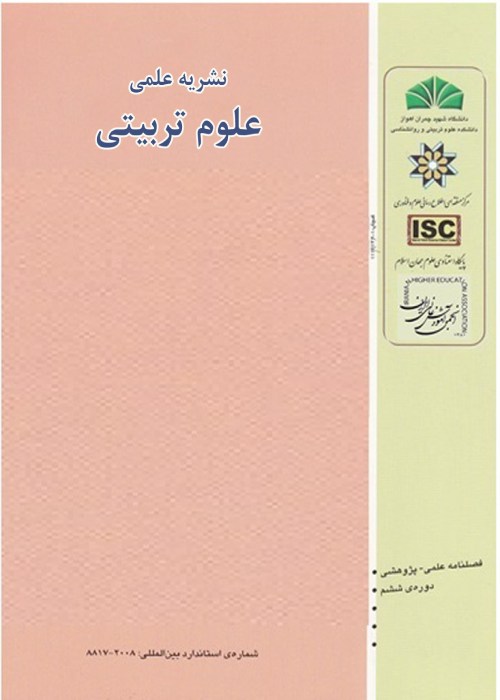Identify Components of Cultural Education and Its Relationship with Collective Communication Media (With an Emphasis on Virtual Space )
Cultural education is influential in preparing and empowering people to achieve cultural, professional, and personal objectives and acquire social norms. The present study aimed to identify the cultural education components and its relationship with mass communication media with an emphasis on virtual space.
The mixed research method was exploratory (qualitative-quantitative) and the case study was used as the qualitative method. The statistical population included Instructional, cultural, and educational experts of the General Department of Education of Mazandaran province during 2020-2021. In this qualitative research, 10 people were selected based on the theoretical saturation of the sample using the purposeful snowball sampling. In the quantitative research, the population consisted of all the teachers of Babolsar city (n= 430). The sample size was calculated to be 200 people using Karjesi and Morgan Table, and the random sampling method was applied. The semi-structured interview was used to collect the data in the qualitative method, which were analyzed based on the open, central, and selective coding. Further, the researcher-made questionnaire was used in the quantitative method and the data were analyzed using SPSS and AMOS software.
The qualitative findings indicated that 35 sub-categories in the open coding section, 12 sub-categories in the central coding section, and five main categories in the selective coding section were extracted under the title of knowledge seeking, independent thinking, critical thinking, Iranian-Islamic identity, and mass media regarding cultural education. The quantitative results revealed a significant fit between the components of cultural education, including knowledge seeking, independent thinking, critical thinking, and Iranian-Islamic identity, and the mass communication media.
Therefore, complex cultural factors play a role in using mass media, which need to be identified. Cultural education provides unique opportunities to obtain desirable results in achieving the educational objectives, i.e. quality of life, humanity, cultural pluralism, citizenship, general education, and personal satisfaction (self-fulfillment). Expanding the curriculum model application based on the cultural education components in educational, cultural, and social institutions, especially the Ministry of Education, contains an crucial and special application in improving the cultural spirit of education staff and teachers, and consequently, leads to the development and students' progress and the scientific development of Iran.
- حق عضویت دریافتی صرف حمایت از نشریات عضو و نگهداری، تکمیل و توسعه مگیران میشود.
- پرداخت حق اشتراک و دانلود مقالات اجازه بازنشر آن در سایر رسانههای چاپی و دیجیتال را به کاربر نمیدهد.



